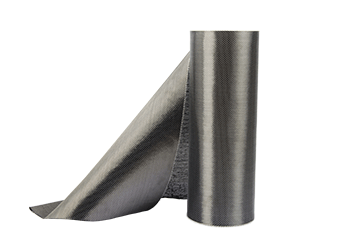Solutions
Horse Construction offers full range of structural strengthening materials with technical supports, documentation supports, products supports, project supports.
Carbon Fiber Reinforced Wrap Beam - Horse Construction

Every building has "beams".
In the past, when building houses, beams were used to bear the weight of the roof. These beams, also called roof beams, are the most important part of the superstructure of the building.
If the beam has a safety hazard, the consequences will be unimaginable. What should we do to strengthen the beam?
At present, there is a new type of reinforcement method---beam pasted with carbon fiber wrap.
The beam is pasted with carbon fiber, that is, a layer of carbon fiber wrap is pasted on the bottom surface of the beam through a bonding material to form an integral structure. When this structure is under load on the beam, the carbon fiber wrap and the beam work together and bear the force together, so as to achieve the effect of reinforcement.
Generally speaking, beam-attached carbon fiber has the following "curing" effects:
1. Damage to the beam, such as cracks on the bottom surface of the beam, etc. Due to the good tensile performance of carbon fiber wrap, by pasting carbon fiber wrap on the bottom surface of the beam, the development of cracks can be well restrained, thus achieving the purpose of strengthening the structure. Before sticking the carbon wrap, it is generally necessary to seal the cracks with joint sealing and potting glue.
2. The seismic performance of the house does not meet the design requirements, and the beam is reinforced with carbon fiber for seismic reinforcement.
3. Reduce the deformation caused by the increase of house load.
4. Insufficient reinforcement of components.

Carbon fiber can be used to strengthen the beam in the following ways:
1. Paste carbon fiber in the tension area of the beam member for bending reinforcement, and the fiber direction is consistent with the tension direction of the reinforcement.
2. Adopt closed pasting, u-shaped pasting or side pasting to strengthen the beam members under shear, and the fiber direction should be consistent with the tensile direction.
3. Adopt enclosed paste to strengthen the beam for earthquake resistance.
The design of beam pasted carbon fiber has the following requirements:
1. When the beam is pasted with carbon fiber, the ultimate state design method based on probability theory shall be used to check the ultimate state of the bearing capacity in accordance with the current relevant national standards.
2. Rebar and concrete materials should determine their corresponding material strength design indicators according to the actual strength obtained from the test and the current relevant national standards.
3. Carbon fiber should determine the corresponding stress according to the elastic stress-strain relationship according to the strain when the component reaches the limit state.
Precautions for beam pasting carbon fiber:
1. For carbon fiber, the ultimate tensile strength of not less than 95% guarantee rate provided by the manufacturer shall be taken as the standard value of tensile strength. The extreme limit tensile strain of carbon fiber should be taken as the standard value of tensile strength divided by the modulus of elasticity.
2. When using pasted carbon fiber to reinforce a structure or component, the possible impact on other components or other properties of the components in the structure should be considered after the reinforcement.
3. When using pasted carbon fiber for structural reinforcement, it is advisable to remove the live load acting on the structure. If reinforcement cannot be carried out under complete unloading conditions, the influence of the secondary force shall be considered.
4. During bending reinforcement and shear reinforcement, the actual concrete strength grade of the reinforced concrete structure and components should not be lower than C15.
5. The lap length of the carbon fiber wrap along the fiber direction should not be less than 100mm. When multiple or multiple layers of carbon fiber wrap are used for reinforcement, the overlapping positions of each or each layer of carbon fiber wrap should be staggered with each other.
You can find anything here you are in need of, have a trust trying on these products, you will find the big difference after that.

High strength, unidirectional carbon fiber wrap pre-saturated to form a carbon fiber reinforced polymer (CFRP) wrap used to strengthen structural concrete elements.

High strength, unidirectional carbon fiber fabric pre-saturated to form a carbon fiber reinforced polymer (CFRP) fabric used to strengthen structural concrete elements.

High strength, unidirectional carbon fiber sheet pre-saturated to form a carbon fiber reinforced polymer (CFRP) sheet used to strengthen structural concrete elements.